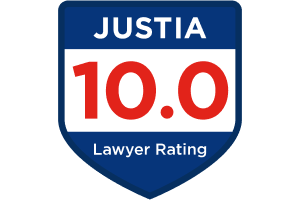Most Dangerous Intersections in New York
Navigating New York City’s streets presents challenges for even the most experienced drivers. An experienced New York car accident lawyer knows that certain intersections in the city are especially dangerous due to the combination of overwhelming traffic volume, constant pedestrian movement, aggressive driving behavior, and complex road configurations. These factors make it more difficult for motorists, cyclists, and pedestrians to safely share the road. As a result, many of the same intersections consistently see higher rates of accidents involving serious injuries. Victims often suffer significant physical pain, ranging from broken bones and head trauma to spinal injuries and internal damage. These injuries can lead to long-term medical treatment, lost wages, and lasting financial consequences. Some accidents also involve fatalities, leaving families devastated and without answers. When collisions happen at these high-risk locations, determining fault and securing fair compensation requires a careful analysis of road conditions, driver behavior, and traffic laws. For those injured in these areas, seeking the advice of a knowledgeable New York car accident lawyer can make a difference in protecting legal rights and recovering damages for both physical and financial losses.
What Makes Certain Intersections More Dangerous?
Some New York intersections regularly experience high crash rates due to a combination of traffic flow, visibility problems, and infrastructure limitations. Key contributing factors include:
- High traffic volume: Intersections with thousands of vehicles daily see more opportunities for collisions due to congestion and frequent stops.
- Proximity to bridges or expressways: Intersections near major access points such as the Manhattan Bridge or the BQE funnel high-speed vehicles into slower urban traffic, increasing collision risk.
- Unprotected left turns: Intersections without left-turn signals force drivers to find gaps in oncoming traffic, often resulting in T-bone crashes.
- Limited visibility: Parked vehicles, building corners, and inadequate lighting can make it hard to see oncoming traffic or crossing pedestrians.
- Poor pedestrian accommodations: Inadequate crosswalks or missing pedestrian islands increase the risk of serious injury for those on foot.
- Complex road geometry: Intersections with unusual angles or multiple merges can cause confusion and erratic maneuvers.
When these elements are combined, even careful drivers may struggle to navigate safely. Pedestrians and cyclists also face heightened risks, particularly when crossing wide, multilane streets or dealing with impatient drivers.
What Are the Top 5 Most Dangerous Intersections in New York City?
These five intersections have consistently ranked among the highest in crash frequency and severity, based on NYC Open Data, Vision Zero reports, and media coverage.
- Tillary Street and Flatbush Avenue, Brooklyn. Situated at the foot of the Manhattan Bridge, this intersection serves as a major link between the bridge, the Brooklyn-Queens Expressway, and the Brooklyn Bridge. Thousands of vehicles move through the area daily, many of them merging, turning, or changing lanes.According to city crash data, this location is among the most accident-prone in Brooklyn. In one reported case, a motorcyclist died after colliding with a turning vehicle. Accidents involving left-turning drivers, speeding, and obscured sightlines are frequent. Despite ongoing safety projects, the area remains hazardous for motorists and pedestrians alike.
- 2nd Avenue and East 59th Street, Manhattan. This intersection sits at the Manhattan entrance to the Queensboro Bridge. It sees a continuous stream of traffic entering and exiting the bridge. Left-turning vehicles are common, and the area is busy with pedestrians.In one notable case, pedestrian Cesar Velazquez was struck on October 4, 2010, while lawfully crossing East 59th Street. The driver, Clark Gettinger, reportedly hit Velazquez with his Lexus and according to media reports, later agreed to a $3 million settlement. The accident, which caused serious injuries, highlighted long-standing concerns about vehicle speeds, visibility, and pedestrian safety at this heavily trafficked intersection. See Julia Marsh, “Man reaches $3M settlement with trust-funder who mowed him down in 2010,” N.Y. Post (June 3, 2016)
- 42nd Street and 8th Avenue, Manhattan. Located near the Port Authority Bus Terminal and Times Square, this intersection handles high volumes of vehicles and pedestrians at all hours. Taxi traffic, ride-share pickups, and pedestrian crossings make this one of the most congested and unpredictable intersections in the city.Data shows an average of 140 crashes per year here. Rear-end collisions and pedestrian knockdowns are frequent. Pedestrians crossing against signals or outside designated areas are common. Limited space and unclear lane markings add to the hazard.
- Linden Boulevard and Pennsylvania Avenue, Brooklyn. This intersection is a key connector for drivers heading toward JFK Airport and Long Island. The surrounding area includes residential zones and busy commercial corridors.Annual crash data reports between 130 and 140 collisions. A senior pedestrian was killed in a hit-and-run here, prompting community calls for better lighting and clearer crosswalks. Speeding, especially on the long stretches of Linden Boulevard, remains a constant issue.
- Atlantic Avenue and Pennsylvania Avenue, Brooklyn. One of Brooklyn’s busiest intersections, this location averages over 130 crashes per year. Atlantic Avenue is often called “Brooklyn’s Boulevard of Death” due to its history of pedestrian fatalities.Rear-end crashes, pedestrian strikes, and sideswipes are frequent here. The width of Atlantic Avenue, combined with multiple lanes and often confusing signal patterns, contributes to the danger. Efforts by the Department of Transportation include safety audits and potential redesigns, but the area remains a hotspot for accidents.
What Are the Most Common Causes of Intersection Accidents in New York?
Intersections are among the most hazardous places on New York roads. Collisions often occur because of driver mistakes, inattention, or traffic violations. For those injured in these accidents, an experienced New York car accident lawyer can help investigate the cause and pursue financial recovery.
- Failure to yield: Drivers frequently fail to yield the right of way when making left turns or entering cross streets. At intersections, this often leads to side-impact crashes involving other vehicles, cyclists, or pedestrians.In Ki Hong Park v. Giunta, 2023 N.Y. Slip Op. 03004 (2d Dep’t June 7, 2023), the plaintiff was injured in a collision at an intersection in Queens when the defendant failed to yield the right-of-way after stopping at a stop sign. The intersection was controlled by a stop sign for the defendant’s direction, while the plaintiff’s vehicle had the right-of-way. The Appellate Division held that the defendant’s failure to yield constituted negligence as a matter of law under N.Y. Veh. & Traf. Law § 1142(a). Although the court affirmed summary judgment on liability in favor of the plaintiff, it found that triable issues of fact remained as to comparative negligence, including whether the plaintiff was driving at a safe speed and could have avoided the accident.
- Distraction: Using a phone, adjusting the radio, or talking with passengers diverts a driver’s attention. At intersections, where multiple decisions must be made in seconds, distraction can easily lead to a collision.
- Speeding: Drivers who exceed the posted speed limit may not be able to stop in time when a light changes or a pedestrian steps into the crosswalk. Speeding increases the force of impact and the severity of injuries.
- Red light running: Some drivers accelerate to get through a yellow light, only to enter the intersection after it turns red. This behavior often results in T-bone crashes, especially with vehicles that have just started moving on a green light.The same principal applies to failing to stop at a stop sign. In Perez v. Paljevic, 2005 N.Y. Slip Op. 5848865 (App. Div. 2d Dep’t 2005), the plaintiff was injured in a motor vehicle accident at an intersection where the defendant’s direction of travel was controlled by a stop sign. The plaintiff had the right-of-way, while the defendant claimed to have stopped before proceeding into the intersection and colliding with the plaintiff’s vehicle. The Appellate Division held that the defendant violated N.Y. Veh. & Traf. Law §§ 1142(a), 1172(a) by failing to yield the right-of-way, and that such a violation constituted negligence as a matter of law.
- Improper U-turns or lane changes: Sudden or illegal U-turns and unsignaled lane changes confuse other road users. These maneuvers are particularly dangerous at intersections where visibility and reaction time are limited.
- Left-turn errors: Many intersection crashes occur when drivers making left turns misjudge the speed or distance of oncoming traffic. Without a protected turn signal, this situation often leads to serious accidents.
- Impaired driving: Alcohol or drug use slows reaction time and clouds judgment. Impaired drivers may ignore traffic signals or fail to notice other vehicles, pedestrians, or cyclists in the intersection.
What Injuries Are Common in New York Intersection Accidents?
Intersections are among the most dangerous places for road users, especially for pedestrians and cyclists who lack physical protection. These crashes often lead to serious injuries that may have long-term physical, emotional, and financial consequences. An experienced New York car accident lawyer can help injured individuals understand their rights and determine whether their injuries qualify for compensation beyond basic no-fault benefits.
Common injuries in intersection accidents include:
- Whiplash and other neck injuries: Common in rear-end collisions, these injuries can cause lasting pain and limited mobility.
- Concussions and traumatic brain injuries: A sudden impact may cause the head to strike a surface, leading to cognitive problems, memory loss, or long-term disability.
- Fractures of the limbs or ribs: Broken bones often require surgery or extended recovery time.
- Spinal cord injuries, including partial or complete paralysis: These injuries are life-changing and may result in permanent loss of mobility or sensation.
- Internal injuries, such as organ damage or internal bleeding: These may not be immediately visible but can be life-threatening without urgent treatment.
- Torn ligaments, strains, and soft tissue damage: Often caused by sudden impact or twisting, these injuries can affect movement and daily activities.
Under N.Y. Ins. Law § 5102(d), only victims who suffer a “serious injury” may pursue damages for pain and suffering and other non-economic losses. Serious injuries include:
- Death
- Dismemberment
- Significant disfigurement
- A fracture
- Loss of a fetus
- Permanent loss or limitation of use of a body organ, member, function, or system
- A medically determined injury that prevents the person from performing their usual daily activities for at least 90 out of the first 180 days following the accident
If you have experienced any of these injuries after an intersection crash, speaking with a skilled New York car accident lawyer can help you understand whether you are eligible to file a personal injury lawsuit.
What Steps Should You Take After an Intersection Accident in New York?
To protect your legal rights and improve your chance of recovery, take the following steps after a crash:
- Call 911 to report the accident.
- Request medical attention even for minor symptoms.
- Take photos of vehicle damage, the intersection, traffic signals, and your injuries.
- Exchange information with the other driver(s), including insurance and contact details.
- Collect names and contact info from witnesses.
- Obtain a copy of the police report.
- Notify your insurance company to initiate the no-fault claim.
- Contact a car accident lawyer to begin an investigation and preserve your rights.
Avoid making statements to insurance adjusters until you speak with an experienced New York car accident lawyer who can help gather surveillance footage, obtain black box data, and consult experts in accident reconstruction.
What Compensation Can You Recover After a Serious Intersection Accident in New York?
Victims of serious intersection accidents may be entitled to various forms of compensation depending on the severity of their injuries and the impact on their lives. With guidance from an experienced New York car accident lawyer, injured individuals can pursue claims that address both immediate financial losses and longer-term consequences. Compensation may include:
- Medical expenses: This includes hospital bills, physical therapy, surgery, rehabilitation, and necessary future treatments.
- Lost income: Injured victims may recover wages lost due to missed work, including salary, overtime, bonuses, and commissions.
- Future earning loss: If injuries result in permanent disability or reduced earning capacity, victims may be compensated for loss of future income.
- Pain and suffering: If the injury meets the legal definition of “serious,” victims may seek damages for physical pain, emotional distress, and reduced quality of life.
- Property damage: This covers the cost to repair or replace your vehicle and other personal property damaged in the crash.
New York follows a no-fault insurance system, meaning initial compensation for medical costs and lost wages typically comes from the injured party’s own insurance company, regardless of who was at fault. However, under N.Y. Ins. Law § 5102(d), a person who sustains a “serious injury” may pursue a personal injury lawsuit against the negligent driver to recover non-economic damages such as pain and suffering.
“Serious injury” is defined by statute and includes conditions such as death, dismemberment, significant disfigurement, a fracture, loss of a fetus, permanent loss or limitation of use of a body organ or function, or an injury that prevents the person from performing substantially all of their usual daily activities for at least 90 of the 180 days immediately following the accident. See N.Y. Ins. Law § 5102(d)
In cases involving reckless behavior, such as intoxicated or excessively dangerous driving, courts may also award punitive damages to penalize the wrongdoer and deter similar misconduct in the future.
What Is the Statute of Limitations for Intersection Accident Claims in New York?
Victims of intersection accidents must act within specific legal time limits. These deadlines vary depending on whether the claim is against a private party or a government entity. Failing to meet these deadlines may result in your claim being permanently barred.
- Personal injury (private party): You must file a lawsuit within 3 years from the date of the accident. See N.Y. C.P.L.R. § 214(5)
- Property damage (private party): You must file a lawsuit within 3 years from the date of the accident. See N.Y. C.P.L.R. § 214(4)
- Notice of Claim (municipal entity): If your claim is against a city agency or public authority, you must file a Notice of Claim within 90 days of the accident. See N.Y. Gen. Mun. Law § 50-e(1)(a)
- Lawsuit against a municipal entity: You must start the lawsuit within 1 year and 90 days from the date of the accident. See N.Y. Gen. Mun. Law § 50-i(1)(c)
These deadlines are strict. To protect your legal rights and avoid losing the ability to seek compensation, consult an experienced New York car accident lawyer as soon as possible after an intersection accident.
Frequently Asked Questions
A. If a traffic light was not working properly, liability may rest with the city or municipal agency responsible for maintenance. These cases often require proof of prior complaints or notice of the issue. An attorney can help gather evidence and determine whether a government claim is appropriate.
A. Footage from traffic cameras, nearby businesses, or private dash cams can be critical in showing how the accident happened. Prompt investigation is necessary, as video may be overwritten or deleted quickly.
A. No. You are not legally required to speak with the other driver’s insurance company, and doing so without legal guidance can hurt your case. Insurance adjusters may ask leading or recorded questions designed to get you to admit fault or downplay your injuries. Even casual remarks can later be used to deny or reduce your claim. In some cases, they may pressure you to accept a quick settlement that does not reflect the full extent of your medical costs, lost income, or long-term needs. It is safer to refer any calls or written communications from the insurance company to your attorney. An experienced New York car accident lawyer can ensure that your rights are protected and that you do not say or agree to anything that could weaken your case.
A. Yes. Intersections are common locations for pedestrian accidents due to crosswalks, turning vehicles, and high foot traffic. Drivers often fail to yield or check for pedestrians before turning.
A. Poor lighting, missing signage, or other hazardous road conditions may contribute to an accident and shift liability to the municipality or public agency responsible for maintaining the roadway. Under New York law, a municipality is generally not liable for roadway defects unless it had prior written notice of the condition or affirmatively created it through an act of negligence. See Amabile v. City of Buffalo, 93 N.Y.2d 471 (1999). To pursue a claim against a municipal entity, you must file a Notice of Claim within 90 days of the accident. See N.Y. Gen. Mun. Law § 50-e(1)(a). The lawsuit itself must be filed within 1 year and 90 days of the incident. See N.Y. Gen. Mun. Law § 50-i(1)(c). Due to these strict procedural requirements and evidentiary burdens, it is important to speak with an experienced car accident attorney serving New York as soon as possible after the crash.
Contact Stephen Bilkis & Associates
Car accidents in New York occur far too often, leaving victims and their families facing long-recovery times, inability to work, and financial crises. If you or someone you care about was seriously injured in a car accident in New York, you have the right to hold the negligent driver or owner of the vehicle accountable by filing a personal injury lawsuit. Contact an experienced car accident attorney in New York at Stephen Bilkis & Associates today at 800.696.9529 to schedule a free, no obligation consultation regarding your car accident. We represent clients in the following locations: Nassau County, Queens, Manhattan, Long Island, Brooklyn, Suffolk County, Westchester County, Staten Island, and Bronx.






